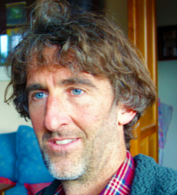New research has confirmed failure of the water transport system causes tree mortality in drought, with scientists advocating a new optical technique which will help assess vulnerability of forests to future damage.
Researchers from the University of Tasmania, Western Sydney (WSU) and Yale University explored the current understanding of tree responses to droughts.
The study was led by Associate Professor Brendan Choat (WSU) and Professor Timothy Brodribb from the University of Tasmania’s School of Natural Sciences.
The findings concluded that failure of the water transport system in plants triggers tree death during drought.
The research paper, ‘Triggers of tree mortality under drought’, was published in Nature.
“Severe droughts continue to cause widespread tree mortality, which have profound impacts on ecosystem function and carbon balance,” co-author Professor Brodribb said.
These types of events are occurring more frequently and have significant global implications.
“The challenge has always been to find out when trees are going to die.
You cannot see it happening, once trees cross a critical threshold, death occurs very quickly.
Researchers advocated a technique, developed by Professor Brodribb, of using visible light to look into leaves to further understand a plant’s vascular system.
The technique observes changes in the reflectance of wood as branches fill with air prior to tree death. The technique also allows scientists to see what’s going on inside a tree’s leaves.
Like all vascular plants, trees use an intricate plumbing system of hollow dead cells (xylem) which transport water from the soil to the leaves.
“When a drought comes on, it can put a lot of stress on a plant’s water transport system,” Professor Brodribb said.
Liquid water under tension or stress can be prone to cavitation, a sudden phase change from liquid water to gas that creates a bubble (embolism).
“Once the system’s threshold has been exceeded it can lead to a massive cavitation event which causes the plant to die very quickly,” he said.
If we can predict where a cavitation event starts, we can look at the tension in the xylem, and know if it continues down this trajectory the plant will die soon.
Professor Brodribb said the success of adopting the technique in this experiment would allow scientists to now characterise the vulnerability of forest species and communities to drought.
To view the paper, please visit https://www.nature.com/articles/s41586-018-0240-x.
Interested in conducting your own research? Apply now to become a research student.
